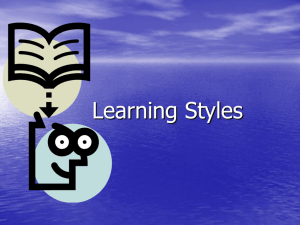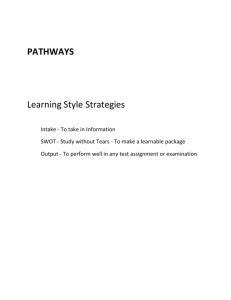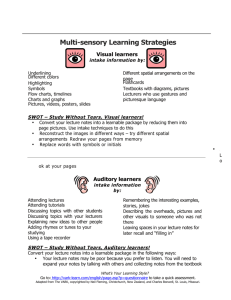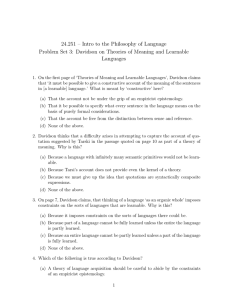VARK Study Tips
advertisement
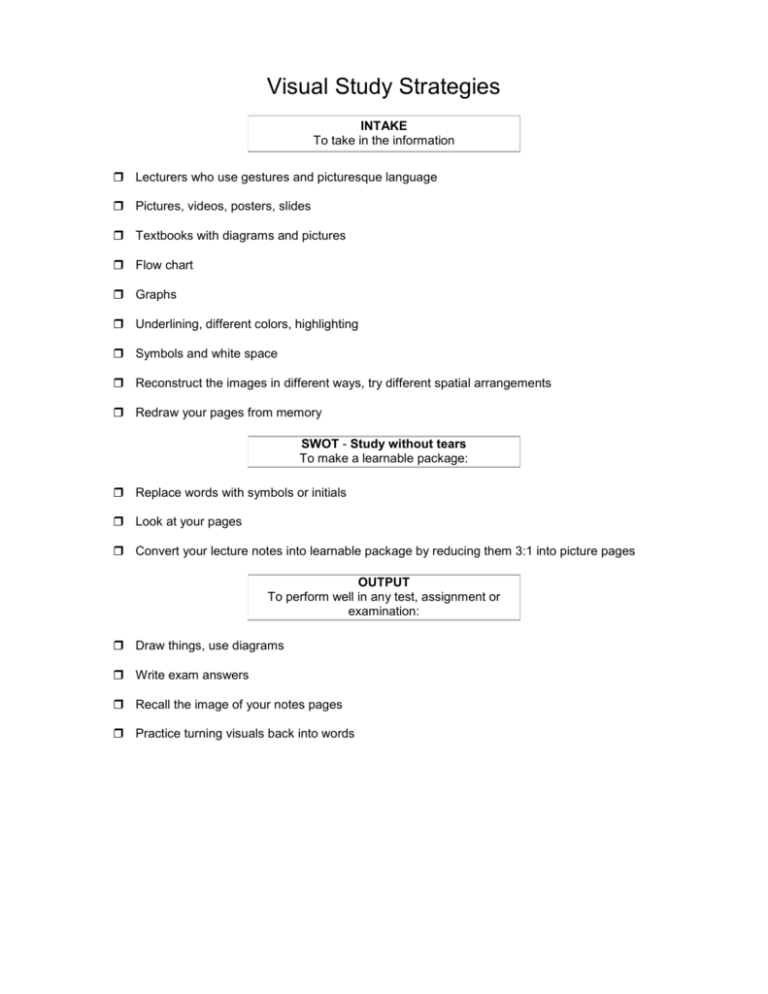
Visual Study Strategies INTAKE To take in the information Lecturers who use gestures and picturesque language Pictures, videos, posters, slides Textbooks with diagrams and pictures Flow chart Graphs Underlining, different colors, highlighting Symbols and white space Reconstruct the images in different ways, try different spatial arrangements Redraw your pages from memory SWOT - Study without tears To make a learnable package: Replace words with symbols or initials Look at your pages Convert your lecture notes into learnable package by reducing them 3:1 into picture pages OUTPUT To perform well in any test, assignment or examination: Draw things, use diagrams Write exam answers Recall the image of your notes pages Practice turning visuals back into words Aural Study Strategies INTAKE To take in the information Attend classes Attend discussions and tutorials Discuss topics with others Discuss topics with your teachers Explain new ideas to other people Use a tape recorder Remember the interesting examples, stories, jokes... Describe the overheads, pictures and other visuals to somebody who was not there Leave spaces in your notes for later recall and 'filling' SWOT - Study without tears To make a learnable package: Convert your notes into a learnable package by reducing them (3:1) Your notes may be poor because you prefer to listen. You will need to expand your notes by talking with others and collecting notes from the textbook. Put your summarized notes onto tapes and listen to them. Ask others to 'hear' your understanding of a topic. Read your summarized notes aloud. Explain your notes to another 'aural' person. OUTPUT To perform well in any test, assignment or examination: Imagine talking with the examiner Listen to your voices and write them down. Spend time in quiet places recalling the ideas. Practice writing answers to old exam questions. Speak your answers aloud or inside your head. Read/Write Study Strategies INTAKE To take in the information, use: Lists Headings Dictionaries Glossaries Definitions Handouts Textbooks Readings - library Notes (often verbatim) Teachers who use words well and have lots of information in sentences and notes Essays Manuals (computing and laboratory) SWOT - Study without tears To make a learnable package: Convert your notes into a learnable package by reducing them (3:1). Write out the words again and again. Read your notes (silently) again and again. Rewrite the ideas and principles into other words. Organize any diagrams, graphs ... into statements, e.g. "The trend is..." Turn reactions, actions, diagrams, charts and flows into words. Imagine your lists arranged in multiple choice questions and distinguish each from each. OUTPUT To perform well in any test, assignment or examination: Write exam answers. Practice with multiple choice questions. Write paragraphs, beginnings and endings. Write your lists (a,b,c,d,1,2,3,4). Arrange your words into hierarchies and points. Kinesthetic Study Strategies INTAKE To take in the information, use: All your senses - sight, touch, taste, smell, hearing ... Laboratories Field trips Examples of principles Lecturers who give real-life examples Applications Hands-on approaches (computing) Trial and error Collections of rock types, plants, shells, grasses... Exhibits, samples, photographs... Recipes - solutions to problems, previous exam papers SWOT - Study without tears Your lecture notes may be poor because the topics were not 'concrete' or 'relevant'. You will remember the "real" things that happened. Put plenty of examples into your summary. Use case studies and applications to help with principles and abstract concepts. Talk about your notes with another "K" person. Use pictures and photographs that illustrate an idea. Go back to the laboratory or your lab manual. OUTPUT To perform well in any test, assignment or examination: Recall the experiments, field trip... Write practice answers, paragraphs... Role play the exam situation in your own room
